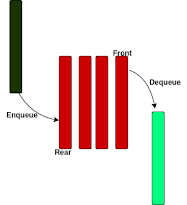Recursion
The process in which a function calls itself and only works where we call the same operation multiple times with different inputs. In every call, we try to make the problem smaller. There must be a base case where the system will stop the recursion and give you a result back. It internally stores the recursion state in the method call stack. If there is no base condition in the recursion method then it will go into an infinite loop and you might face the StackOverflow Exception . There are several types of recursion:- Head Recursion Tail Recursion Tree Recursion Nested Recursion Head Recursion It will call recursively first then at the end do all the computation. private static int factorial( int number) { return (number== 1 )? number : number* factorial (number- 1 ) ; } factorial(5) (5* factorial(5-1)) (5* (4* factorial(4-1)) (5* (4* (3*factorial(3-1))) (5* (4* (3* (2*factorial(2-1)))) (5* (4* (3* (2* (1*1))))) output = 120 Tail Recur




